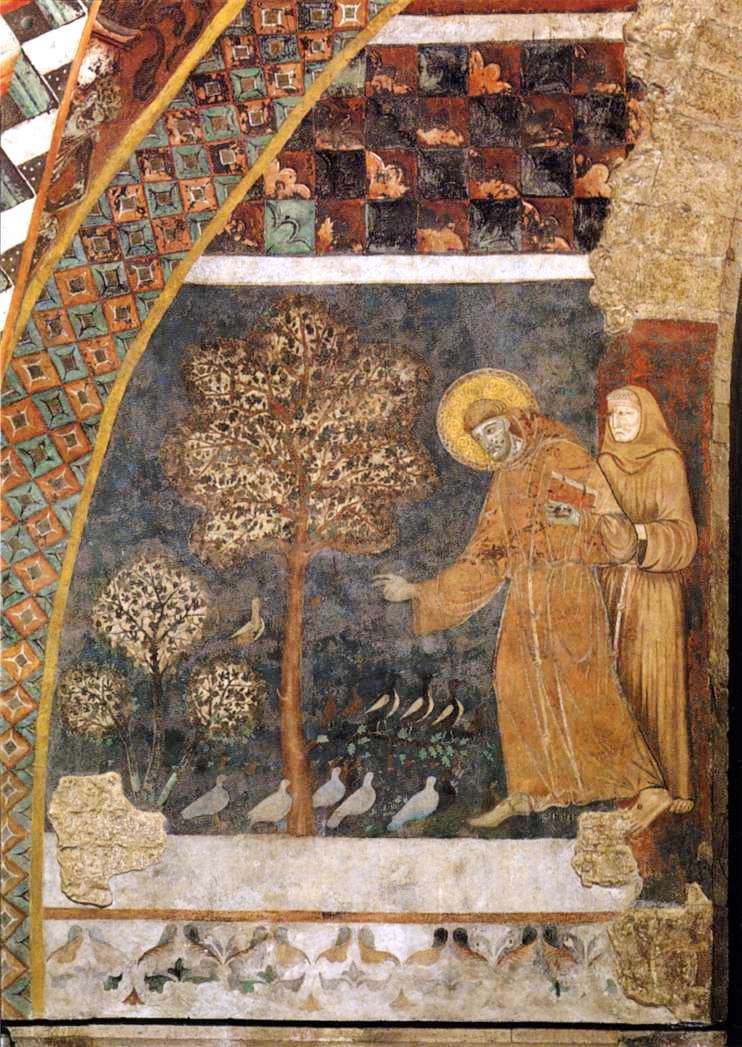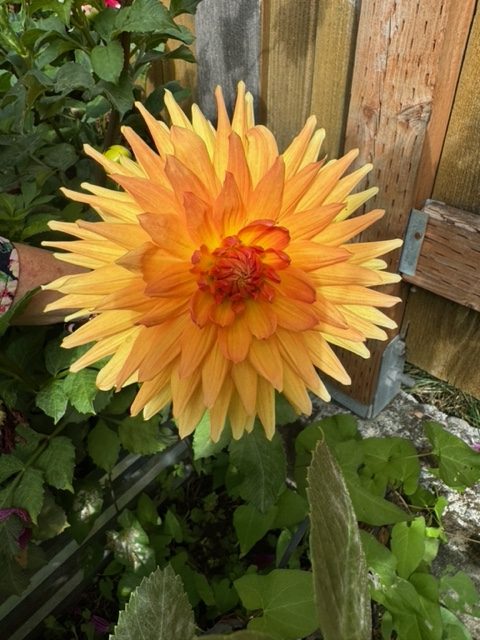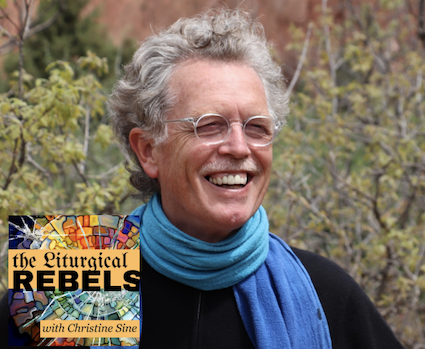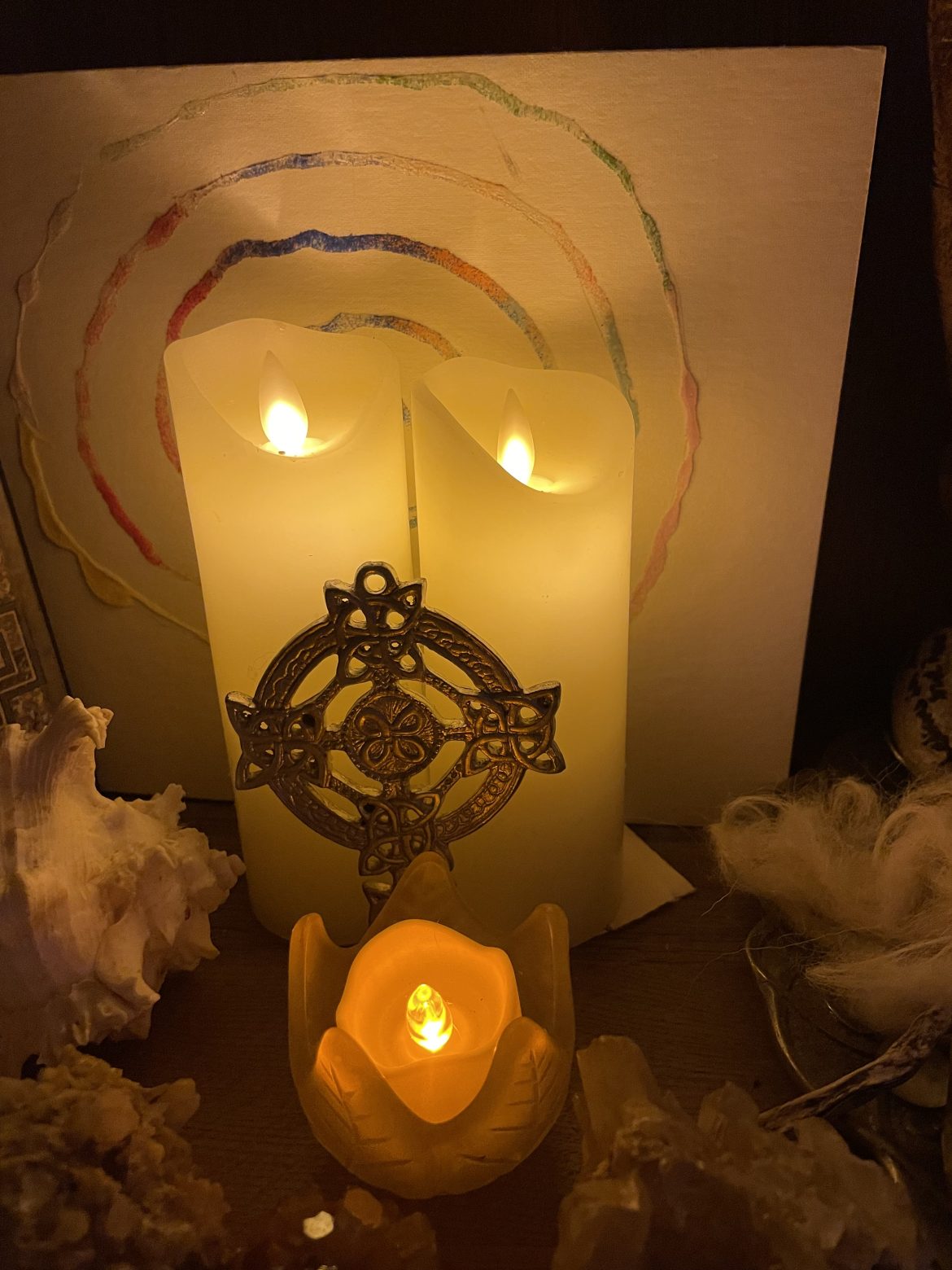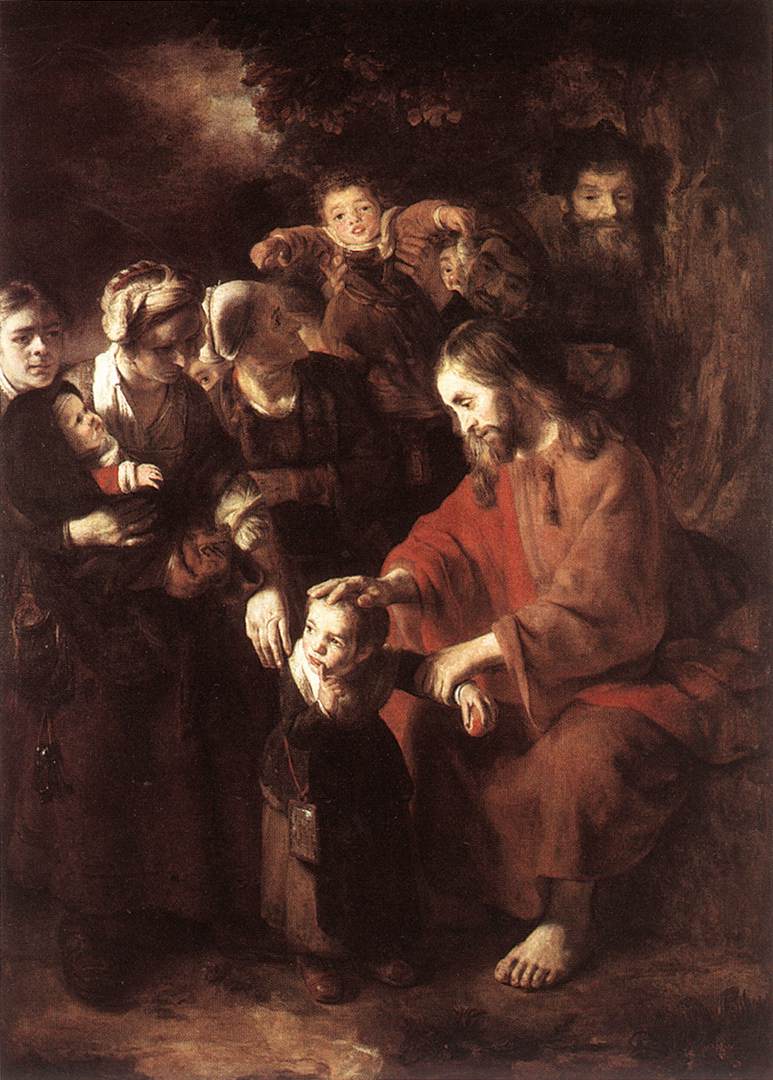by Christine Sine
St Francis Feast Day is only a few days away, October 4th, and many churches, are getting ready for a blessing of the animals at Sunday’s service. St Andrews Episcopal church already did their pet blessing service last week. This practice is growing in popularity across all denominations. Even some zoos are getting into the act.
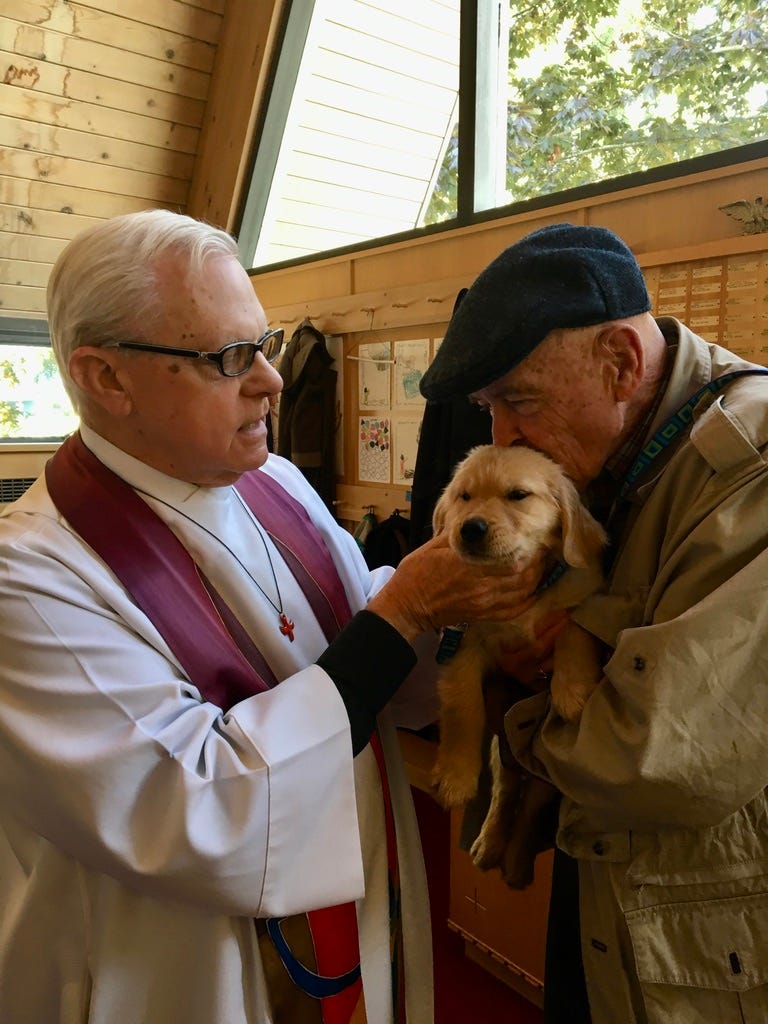
This began as a Catholic celebration associated with St Francis, but has become extremely popular for people of many traditions in the last few years. We are discovering more and more the benefits of pets in our lives and society. Keeping pets is increasingly understood to be good for us. Having a cat around the house can cut the risk of heart attack by almost 50% and dog owners tend to have lower blood pressure and cholesterol. Those of us who are animal lovers have known for a long time that animals buffer us against stress and anxiety. All this from a recent ABC News article . Interestingly kids who have pets when they are young are less likely to get allergies too. So blessing our beloved pets at church, in the synagogue or even in our animal oriented institutions, is not just a fun thing to do, it is acknowledging their importance to both us and God.
Here are some other good resources I have found for litanies on blessing animals.
St Francis Blessing Liturgy by Rev. Robert Morrison and Rev. Richard J. Fairchild
Ritualwell.org has a beautiful Jewish animal blessing
And for something fresh – this contemporary hymn by Carolyn Winfrey Gillette which I have only recently come across.You will need to copy and paste this link to listen to the song and view the video. https://music.youtube.com/watch?v=X-1R3K1UJsM&si=O7NUhbi_CXIdCHHL
St Francis of Assisi – Prayers and Thoughts.

I am not an expert on St Francis but part of what I like about him is that he was very quirky, probably schizophrenic, and always makes me aware that God uses the most unusual people in incredible ways.
St Francis believed that nature itself was the mirror of God. It is probable that he spent time at Bobbio Monastery, a Celtic monastery near Assisi and they may have influenced his love for creation. Like many of the Celtic saints, he called all creatures his “brothers” and “sisters”, and even preached to the birds and supposedly persuaded a wolf to stop attacking some locals if they agreed to feed the wolf. In his “Canticle of the Creatures” (“Praises of Creatures” or “Canticle of the Sun”), he mentioned the “Brother Sun” and “Sister Moon”, the wind and water, and “Sister Death”. This prayer (the real St Francis Prayer) was paraphrased by William Henry Draper in the beautiful English hymn All Creatures of Our God and King.
May God bless us with restless discomfort at easy answers, half truths, and superficial relationships so that we may live deep within our hearts. Amen.
May God bless us with holy anger at injustice, oppression, and exploitation of people so that we may work for justice, freedom and peace. Amen.
May God bless us with the gift of tears to shed for those who suffer from pain, rejection, starvation and war, so that we may reach out our hand to comfort them and to turn their pain into joy. Amen.
May God bless us with enough foolishness to believe that we can make a difference in this world, so that we can do what others claim cannot be done.: To bring justice and kindness
To all our children and the poor. Amen.
This prayer is often associated with St Francis, but like other prayers attributed to him it is not actually written by him. It is still my favourite “Franciscan style prayer”, but was actually written by Benedictine Sister Ruth Fox of Sacred Heart Monastery in Richaldton ND. For more information check out Paul Neely’s post that gave me this information and the link to Sister Ruth’s full blessing).
Another prayer most commonly associated with St Francis was also not written by him but is generally believed to be only about 100 years old, penned by an anonymous French writer as Daniel Horan explains in Living the Prayer of St Francis With All Creation but is still a good reminder of all he stood for.
Lord, make me an instrument of your peace.
Where there is hatred, let me sow love.
Where there is injury, pardon.
Where there is doubt, faith.
Where there is despair, hope.
Where there is darkness, light.
Where there is sadness, joy.
O Divine Master,
Grant that I may not so much seek to be consoled, as to console;
To be understood, as to understand;
To be loved, as to love.
For it is in giving that we receive.
It is in pardoning that we are pardoned,
And it is in dying that we are born to Eternal Life.
Amen.
I particularly love this rendition written for international women’s day a couple of years ago:
A Franciscan Prayer for International Women’s Day.
Paul Neeley at has posted some beautiful songs derived from St Francis Prayer:
The Brilliance – Open Up is a beautiful song.
A rock version of St Francis Prayer
Prayer for St Francis’ Feast
Francis, the destitute and lowly, enters heaven a rich man, acclaimed by the songs of angels!
Lord God, you made Saint Francis of Assisi
Christ-like in his poverty and humility.
Help us so to walk in his ways that,
with joy and love,
we may follow Christ your Son,
and be united to you.
Through our Lord Jesus Christ, your Son,
who lives and reigns with you and the Holy Spirit,
one God, for ever and ever. Amen.
Francis, the destitute and lowly, enters heaven a rich man, acclaimed by the songs of angels!
And finally a beautiful song/prayer/poem of praise from the Franciscan Friars.
The Praises of God
Lord God:
you alone are holy,
you who work wonders!
You are strong, you are great,
you are the Most High,
you are the almighty King,
you, holy Father, King of heaven and earth.
Lord God: you are Three and you are One,
you are goodness, all goodness,
you are the highest Good,
Lord God, living and true.
You are love and charity, you are wisdom,
you are humility, you are patience,
you are beauty, you are sweetness,
you are safety, you are rest, you are joy,
you are our hope
and our delight,
you are justice, you are moderation
you are all our wealth
and riches overflowing.
You are beauty, you are gentleness,
you are our shelter, our guard
and our defender,
you are strength, you are refreshment,
you are our hope.
you are our faith.
you are our love,
you are our complete consolation,
you are our life everlasting,
great and wonderful Lord,
all powerful God, merciful Savior!
Amen.
Give yourself the gift of stillness,
Both outside and in.
Reach for the wonder of each moment.
Be transfixed by the beauty,
In a flower, a life, a beloved face.
Love is born afresh in every moment of the day,
If only we have eyes to see,
And ears to hear,
The wonder of it.
Christine Sine
Is it worth it?….
”I hope it was worth the two days to get there….”
This is what a friend texted me as I landed in Scotland this week. Sadly, she has never been to Scotland.
For me, Scotland is always worth it! It’s a thinplace. A place where the veil between heaven and earth is thin. A place where it’s easy to feel God’s presence and notice the Creator because of all the beauty.
It is the place I go to reconnect to myself and to Jesus and where I get the cup of my life refilled. And after this summer, and “ all the things” of family illnesses and politics, my cup was empty.
The friend who texted, rarely leaves the comforts of home and doesn’t seek places that change her. She isn’t open to new things or new adventures.
And this makes me sad for her because she misses out on all the wonder, and all the change and all the growth of pilgrim living.
I started started going on pilgrimage in the early 2000’s. My friend Mike King told me about taking his kids on journeys of faith to places where people of faith had lived and prayed. I was inspired and wanted to do the same. So we began with Mac and Hudson and took them to the Holy Island of Lindesfarne, to France, to Ireland and to Iona. Rob and I first heard the term thinplace in Oxford back in 2001. Rob was in a workshop led by Esther de Waal . We came home and wondered how to create thinplace in our regular lives and started helping other people find their thinplace. In finding Celtic Christianity, I discovered that I wasn’t crazy, I was just Celtic. And this discovery of Celtic Christianitey has kept me following Jesus ever since. Also, thanks to ancestry.com and looking into my family tree, I now know that I have deep roots genetically in Western Scotland. So it makes sense that I feel at home as soon as I get off the plane.
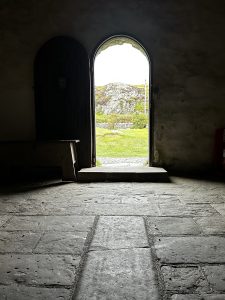
Seek your thinplace
So why go on pilgrimage? Why seek your thinplace ?
–Pilgrimage transforms us both inside and out….if we are open and curious.
If we are willing to take the time to pay attention.
If we are willing to be open to the questions and take time to be in process.
What does God want to talk to me about?
What do I need to understand about myself?
What new vision do I need going forward?
What do I notice that I haven’t been paying attention to in my life?
What is God’s invitation to me?
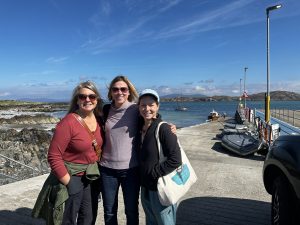
Finding Your Thinplace Pilgrims
I am looking for twelve fellow pilgrims to go with me on a journey of discovery and creativity. It won’t be a long walk like the Camino de Santiago. There will be walking to some very beautiful beaches and a hike around the island of Iona if you choose that adventure. There will be amazing meals together at the St. Columba Hotel where we will spend seven nights. It will be our home while we explore the wonder of this physical thinplace and allow God to help us find our own thinplaces.
This pilgrimage is about experience and experiential learning not just more information…and plenty of time to explore on your own and take naps too because rest is holy.
We start our journey together in Oban and leave our tourist selves behind. Actually we choose to leave our tourist selves behind when we make a reservation. We start to allow the God who calls us all, to start surprising us along the way in our daily lives, watching for signs of God’s love and care for us. From a bird’s song to special color, God can speak to us through everything, we just need to open our ears, our eyes and our hearts.
So YES! A BIG YES! Scotland is WORTH IT! and taking time to find your thinplace is always worth it!
Pilgrimage is an investment in yourself and a Gift from God.
I hope you can join me Sept 1-9, 2025 on Pilgrimage. Finding Your Thinplace in Scotland on Iona
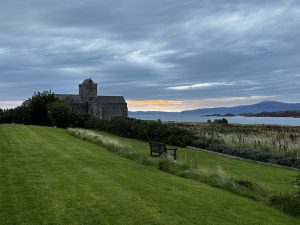
iona abbey view
Iona… “ A few places in the world are held to be holy, because of the love which consecrates them, and the faith that enshrines them. One such is Iona. It is a small isle, fashioned of a little sand, a few grasses, salted with the spray of an ever-restless wave, a few rocks that wade in the heather, and upon whose brow the sea-wind weaves the yellow lichen. But since the remotest days, sacrosanct men (and women) have bowed here in worship. In this little island, a lamp was lit whose flame lighted pagan Europe.
From age to age, lowly hearts have never ceased to bring their burden here. And here HOPE waits. To tell the story of Iona, is to go back to God, and to end in God. “ Fiona Macleod
Questions about the pilgrimage? Just Ask findingyourthinplace@gmail.com
This is the reason we have no ease of heart or soul,
For we are seeking our rest in trivial things, which cannot
satisfy, and not seeking to know God, almighty, all-wise, all good. God is true rest.
Julian of Norwich
©lillylewin and freerangeworship.com
It’s a glorious autumn day in Seattle. The leaves are beginning to change colour, but the bright colours of dahlias, cosmos and geraniums tell me that summer is still in the air. We are still harvesting tomatoes and basil and apples, but my thoughts have shifted to next year’s garden and what needs to be planted now to make it flourish. We tend to think of spring as the planting season, but in nature it is autumn when seeds are scattered and settle into for their winter rest before sprouting as the weather warms. Planting, then rest, then growth. Such a beautiful rhythm that God has devised for our earth.
It’s time to prepare for a slow season of rest and respite. I am certainly ready for it. As I mentioned in my Meditation Monday – Creating a Circle of Light, I replaced all the batteries in my candles over the weekend and am enjoying the morning comfort of their warm glow. Setting up this circle of light around my sacred space is one of my favourite rituals of autumn. What are the rituals that ground you as the seasons change? How do you respond to the lengthening or shortening days, depending on where you are in the world. So important to have rituals that help us through the transitions.
My post, Spiritual Practice – Writing Prayers and Poems with A Celtic Flavour provided another possible way to greet this new season. I shared some of my Celtic style prayers and invited you to create your own. It is a beautiful way to reflect on our days and intertwine God’s presence into our rhythm.
Today, we published the third Liturgical Rebels episode on Celtic spirituality, an interview with John Philip Newell, John Philip Newell, Celtic teacher and author of spirituality who calls the modern world to reawaken to the sacredness of Earth and every human being. he has authored over fifteen books, including his award-winning publication, Sacred Earth Sacred Soul, which was the 2022 Gold Winner of the Nautilus Book Award for Spirituality and Religious Thought of the West. His new book, also with HarperOne, is The Great Search (August 2024), in which he looks at the great spiritual yearnings of humanity today in the context of the decline of religion as we have known it. John Philip was an incredibly fascinating person, and I could have talked to him for hours. I think you will all really enjoy this interview.
I continue to make progress on my book Celtic Advent: Following an Unfamiliar Path, but am engaged in the not so fun process of editing and adding citations I missed. My greatest failing – incomplete bible references. Hopefully we will upload the manuscript on Friday. Talk about a fun project to work on though. I hope you enjoy the finished project as much as I enjoyed working on it.
On Godspacelight, in Freerange Friday – Sitting in the Lap of A Tender God, Lilly Lewin talks about Fr Greg Boyle’s latest book The Whole Language: The Power of Extravagant Tenderness. This is an important book and I love the way she weaves the lessons she learned from it with the week into her reflections on this week’s gospel reading.
Looking ahead – October 9th is Indigenous Peoples Day and I suggest in preparation you read this great post from a couple of years ago by Rachel Taber Hamilton. Increasing our awareness of the peoples who once inhabited our homes and of the genocide that was often done to “clear” the land for our ancestors. As Rachel says “Genocide is never something to celebrate, though it can be important to commemorate. Nations that have been forged from the forces of colonialism have been built upon the premise of clearing away and subjugating indigenous peoples in body, mind and spirit.” So much here that is important to remember.
We are also moving rapidly into what I like to call my “gratitude season” – the days between Canadian Thanksgiving, this year on October 14th, and American Thanksgiving on November 28th. It’s time to think about how you might want to shape this season. In preparation you might like to reread this post – Making Gratitude A Lifelong Habit. Creating seasons like this that mark the seasons and also the important celebrations of our cultures is a wonderful way to ground our lives in the presence of God.
Many blessings on you this week.
Give yourself the gift of stillness,
Both outside and in.
Reach for the wonder of each moment.
Be transfixed by the beauty,
In a flower, a life, a beloved face.
Love is born afresh in every moment of the day,
If only we have eyes to see,
And ears to hear,
The wonder of it.
As an Amazon Associate I receive a small amount for purchases made through appropriate links. Thank you for supporting Godspace in this way.
In this latest episode Christine talks with John Philip Newell and they discuss his interest in Celtic spirituality and the sacredness of Earth. He shares his background growing up in a conservative evangelical tradition and how his experiences in nature led him to explore Celtic wisdom. Newell talks about the significance of the island of Iona in the Celtic tradition and its role as a thin place where heaven and earth meet. He also emphasizes the importance of recognizing the sacredness of all things and the divine essence within every human being. Newell discusses the power of poetry and prayers in Celtic spirituality and the need to embrace wisdom from various religious traditions.
John Philip Newell is a Celtic teacher and author of spirituality who calls the modern world to reawaken to the sacredness of Earth and every human being. Canadian by birth, and a citizen also of Scotland, he resides with his family in Edinburgh and works on both sides of the Atlantic. In 2016 he began the Earth & Soul initiative and teaches regularly in the United States and Canada as well as leading international pilgrimage weeks on Iona in the Western Isles of Scotland.
His PhD is from the University of Edinburgh and he has authored over fifteen books, including his award-winning publication, Sacred Earth Sacred Soul. His new book, also with HarperOne, is The Great Search (August 2024), in which he looks at the great spiritual yearnings of humanity today in the context of the decline of religion as we have known it.
Newell speaks of himself as ‘a wandering teacher’ following the ancient path of many lone teachers before him in the Celtic tradition, seeking the wellbeing of the world. He has been described as having ‘the heart of a Celtic bard and the mind of a Celtic scholar’, combining in his teachings the poetic and the intellectual, the head as well as the heart, and spiritual awareness as well as political and ecological concern.
More about John Philip Newell can be found on his website https://www.earthandsoul.org
As an Amazon Associate I receive a small amount for purchases made through appropriate links. Thank you for supporting Godspace in this way.
by Christine Sine
Over the weekend I set a circle of light around my sacred space. I replaced the batteries in the many candles that fill my corner and provide a welcoming circle of light in the early morning darkness. This is something I do every year as the days shorten and the darkness fills my early morning rituals.
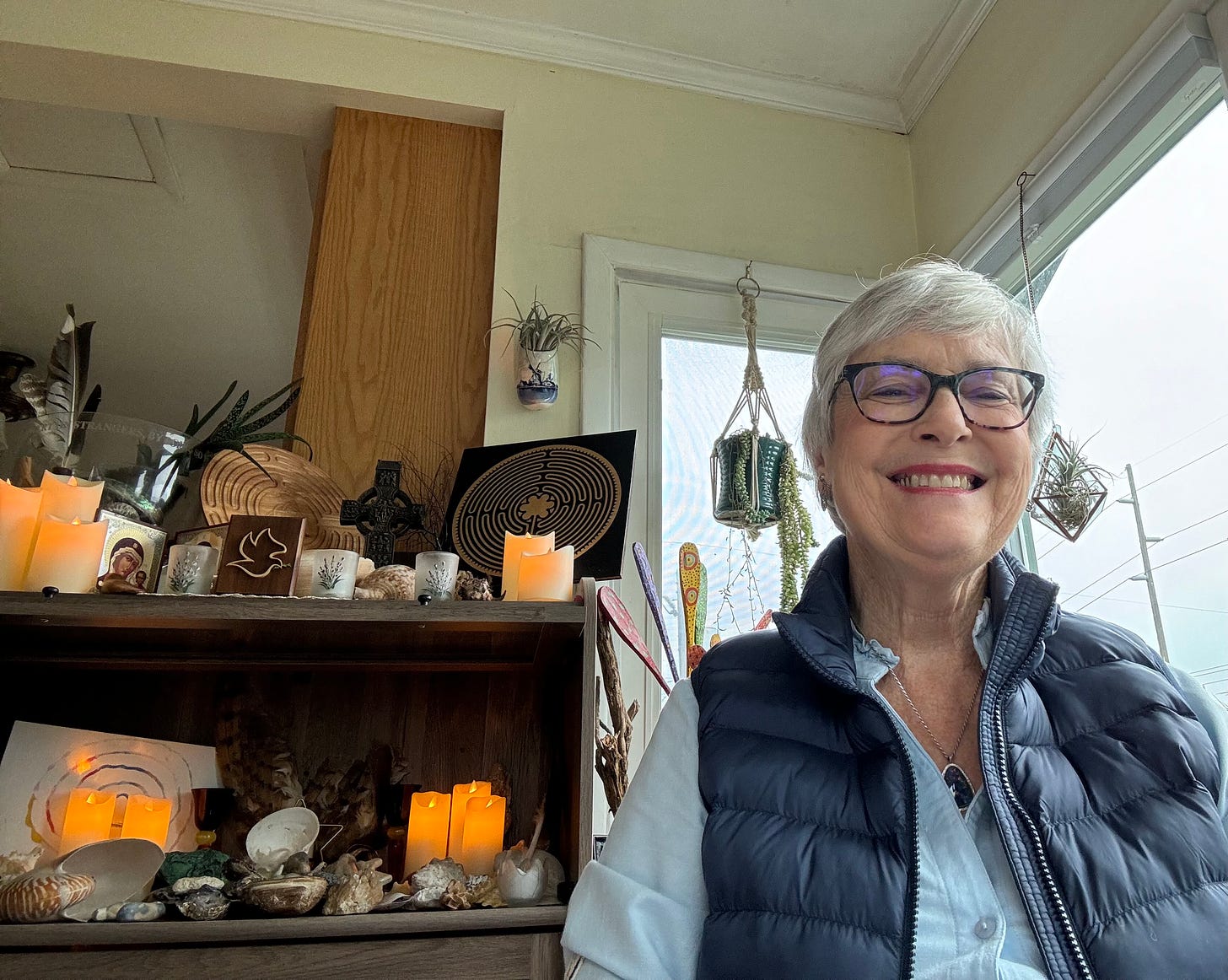
Like the Celts of old, I love circles and am particularly drawn not just to the circle on the Celtic cross and its symbolism of the wholeness of creation, but also to the idea that the monasteries were often surrounded by a circle of crosses for protection and support . In the last few years I have added a circle of crosses as well as lights to my special place. There is something very comforting and nourishing about being surrounded by both the lights and the crosses.
At this time of year, as I sit in my special corner enjoying my circle of lights, I often greet the day with the soft glow of the sunrise reflected on the Olympic mountains outside my window, and say goodbye to the day with the even more breathtaking colors of the sunset over the mountains. It makes me feel as though I am indeed surrounded by God’s light. God’s embracing presence gives me strength, comfort and security in the midst of the ongoing trauma of our world.
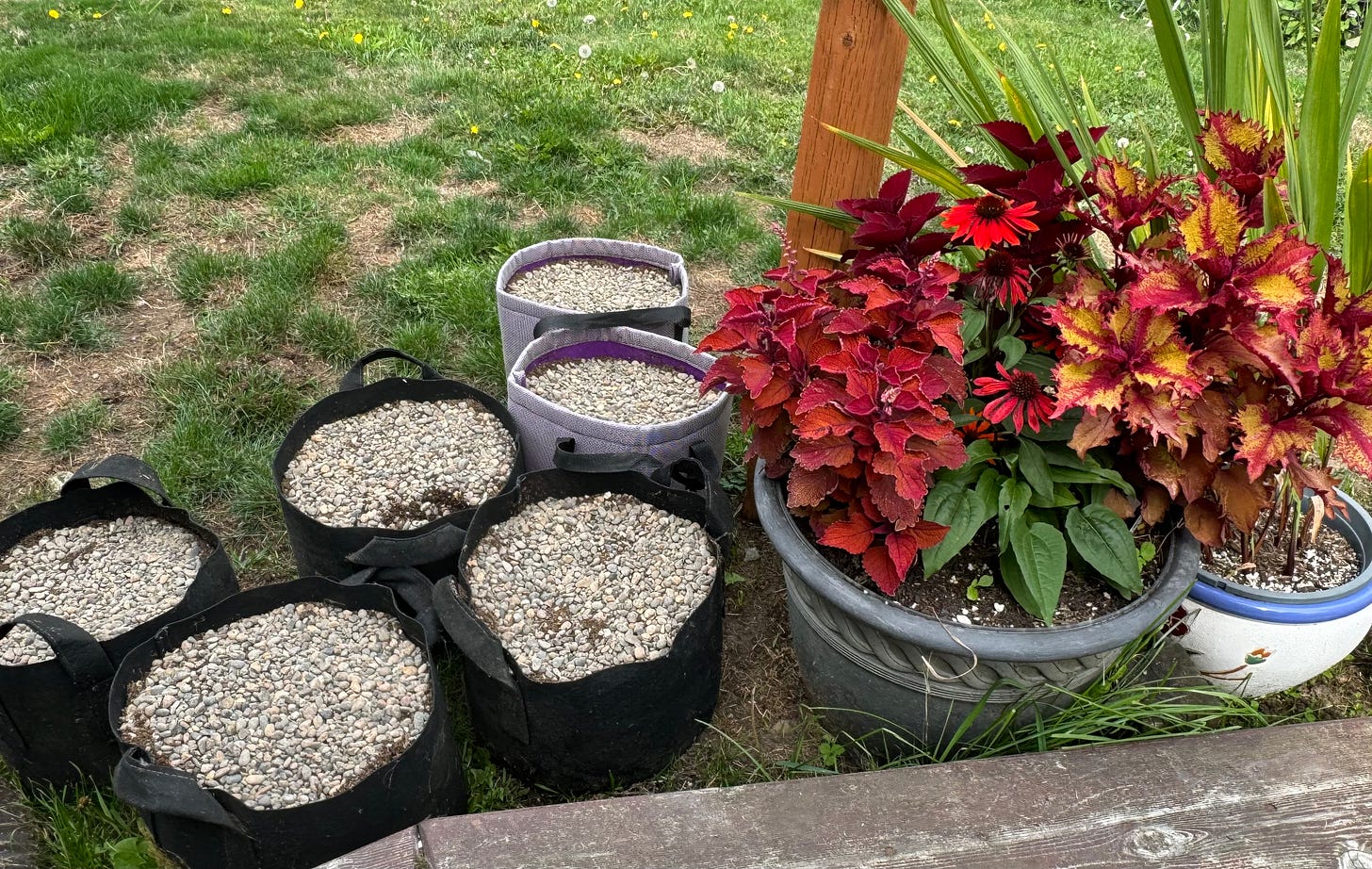
Over the weekend I also performed another ritual that marks the changing of the seasons. I planted spring bulbs. I sat in the sun, soaking up the last few days of summer goodness, and planted seven pots full of tulips, others with alliums, and camassias. I didn’t need to plant more daffodils. They multiply prolifically in my garden. In the next week I will plant other shrubs and bulbs in preparation for the coming year. It is a wonderful reminder that hidden in the dying of autumn is the promise of new life.
I love rituals like this. The first bring comfort for the season ahead. The second gives hope and promise for the days after the darkness. And as we struggle here in the U.S. with the chaos of political turmoil, and the ongoing violence of war in the Middle East, Ukraine and Sudan, we need rituals that give us hope and help ground us in the promises of God.
What are the rituals that ground you at this season? For those getting ready for the season of darkness, how do you prepare? For those welcoming the beauty of spring how do you enter into the nourishing life that is bursting out around you?
Let me end with one of my favourite circling prayers. You might like to sit quietly, take some deep breaths in and out and enter into the comforting presence of God as you read it.
Today, we stand in God’s circle of light,
Breathing in, breathing out.
Today we stand in God’s circle of light,
Light before, light behind,
Light on left, light on right,
Light buried deep within.
Today, we stand in God’s circle of light,
With friends and family, neighbours and strangers,
With all the people of the world.
Together we stand in God’s everlasting light.
Encircled, embraced,
United into one family,
From every nation and culture and creed.
Let this circle hold us,
Let this circle sustain us,
Let this circle surround us,
With the bright and shiny presence
Of the Eternal One,
Who leads us into light.
© Christine Sine September 2020
Happy Weekend! I finished an amazing book this week. The Whole Language: The Power of Extravagant Tenderness by Father Greg Boyle. Father Greg is one of my heroes. I got to hear him speak live at the end of August at Vanderbilt Divinity School. Father G lives out his faith daily and truly invites me to be more like Jesus. Father Greg founded Homeboy Industries over thirty years ago and it is now the largest gang rehabilitation program in the world. Not only do gang members learn to love themselves, they learn to love and work along side their rivals, their enemies. Homeboy industries is now a global community of healing with partner organizations around the world. And Homeboy Industries provides job opportunities that run the gamut from catering to tattoo removal, electronic recycling to a wonderful bakery. Now you can go on line and order products to give or enjoy from their bakery or if you are in LAX you can go to get a snack or a meal from Homeboy Cafe in terminal 3. Not to mention their catering business. All of this is done in a community of kindness and compassion where everyone belongs.
I don’t know about you, but in our current world, where people are so divided and filled with bitterness and hatred, I need the words of Father Greg!
Here are just a few his words to ponder. Pick one that resonates for you today.
“Choose to live in the generous light of God’s outsized love! “
“It will always be less exhausting to love than to find fault”
“God knows your true royal nature, yet one doesn’t become NOBLE we locate our nobility. The hard part is embracing our inner nobility, beauty and goodness. “
“Define one’s self by donation rather than deficit”
“If you talk about health instead of hate, there is no severed belonging. If you say , “Terrible, instead of “ Evil, “ there is no severed belonging. Not “ Erase the Hate, “but increase the Health.”
“I think we settle for just forgiveness when we’re being offered very. I think mercy’s more spacious. Let’s embrace mercy. In this way, s my friend Jack Kornfield say, we “se the compass of our heart. “
“We need to welcome our woundedness so we don’t despise the wounded.”
Like Jesus, Father Greg flips the script of what is expected and invites us to see those on the margins as our teachers and as honored ones. In our gospel lesson for this Sunday, Jesus invites us to consider which road we want to travel. The way of power, or the way of the least of these. The way of dominance and control, or the way of suffering. Are we going to keep arguing along the way with our brothers and sisters, or are we going to embrace the wonder of a little child?
Mark 9: 30-37 NIV
30 They left that place and passed through Galilee. Jesus did not want anyone to know where they were, 31 because he was teaching his disciples. He said to them, “The Son of Man is going to be delivered into the hands of men. They will kill him, and after three days he will rise.” 32 But they did not understand what he meant and were afraid to ask him about it.
33 They came to Capernaum. When he was in the house, he asked them, “What were you arguing about on the road?” 34 But they kept quiet because on the way they had argued about who was the greatest.
35 Sitting down, Jesus called the Twelve and said, “Anyone who wants to be first must be the very last, and the servant of all.”
36 He took a little child whom he placed among them. Taking the child in his arms, he said to them,
37 “Whoever welcomes one of these little children in my name welcomes me; and whoever welcomes me does not welcome me but the one who sent me.”
Mark 9: 30-37 FIRST NATIONS
30From there, Creator Sets Free (Jesus) took his followers on through Circle of Nations (Galilee) but stayed away from the crowds 31so he could further instruct the ones who walked the road with him. “The True Human Being will soon be taken and handed over to men who will kill him, but on the third day he will come back to life from the dead.”
32But his followers did not understand what he meant and were afraid to ask.
33They returned again to Village of Comfort (Capernaum) and settled down into the house there.
“What were you talking about as we walked the road just now?” he asked them.34None of them would answer him, because they had been arguing about who among themselves was the greatest. 35So Creator Sets Free (Jesus) sat down and gathered his twelve followers around him.“The one who would be first must be the one who will serve all the others—and become last,” he told them.
36He then stood a small child in front of them.
“When you represent me and welcome a child like this one, you welcome me.”
37He then took the child into his arms and said, “When you welcome me, you do not welcome me alone, but also the one who sent me.”
What do you tend to argue about along the way? What stuff tends to bug you that distracts you from the real plot of living like Jesus?
What do you argue about with friends, family, strangers or even with in yourself? Does it ever get you what you really want/desire?
LISTEN to Richard Rohr’s homily on this gospel (first bit is rough sound wise, homily is more clear) this is from 2015
Richard Rohr says this gospel passage reveals
a comparison of the two roads we can travel,
the Road that seeks power and upper ward
mobility and the road that is about the weak, powerless And suffering.
What is it in us that seeks power over Being with those who are on the margins?
Why does the Church choose power over service to all ? What would it take to change this ? How do we choose and help others choose to be servants rather than to seek power ?
Children were not valued or considered to be equal to adults during the time of Jesus. Especially girl children.
When you think of the child in the midst of the disciples, do you picture a girl or a boy? Does this change anything for you?
Looking back at this gospel and in relation to Father Greg’s book, I know that I didn’t grow up with a tender Jesus or a tender God, or a very tender faith. God was always mad, or judgng my behavior and if this was true, then I was never going to be good enough for God. One is never Good enough especially if one is a performer rather you just feel bad a lot!
I am ready to embrace a tender God, a tender Jesus who sees us just as we are and loves us before we do anything. Before we are repentant or healed! Before we do any more work for the Kingdom. We are greatly loved and seen as Beloved.
Let’s become these children of King Jesus…living out love and hope and not being judgemental, but being curious and loving and totally accepting of one another.
“When you welcome me, you do not welcome me alone, but also the one who sent me.” Today, let’s welcome ourselves as this child!
PRACTICE: Imagine that you are the little child that Jesus holds and points to as the example in this story. How do you feel? What do you notice? What does it take for you to sit in the lap of Jesus and be held in his love? Be still. Sit in the lap of Jesus today.
HOMEWORK:
Consider children…childlike wonder, joy, acceptance, etc. How can you practice more of this joy childlikeness this week? Swing, pick flowers, shoot hoops, dance with abandon?
Some of Father Greg Boyle’s talks…just know he uses profanity in case this is triggering for you.
©lillylewin and freerangeworship.com
ART:
It’s done. Today I finished the last reflection for my Advent devotional Celtic Advent – Following An Unfamiliar Path. I also received some images from my graphic artist for the cover and appreciate those of you who responded with your opinions on the different options. One thing is obvious, All of us are different with different likes and dislikes. Whichever cover I choose we will not satisfy everyone. However I did receive some helpful feedback that we will take into account. There is still a lot of work to do to upload it to Amazon and have it available by the middle of October but I am confident that we can stick to that timeline…. Maybe be ready a couple of days early. It will be available on Kindle, and we will also be able to take bulk orders at a reduced price. Thank you for your prayers as I complete this project.
The Celtic webinar on Saturday went very well, in spite of the fact that most of those who signed up decided to watch the recording later. It was wonderful to have my good friend Lisa Scandrette and our once upon a time neighbour who now lives in Oregon. We had a great time of teaching, discussion, creativity and writing of poems/prayers. I am delighted to have Lisa’s prayer to add to this newsletter.
As you can imagine my thoughts are very much into Celtic spirituality at the moment. I feel as though I am living and breathing the air that the Celtic saints breathed. My focus was reflected in my Monday Meditation – Finding Joy in the Book of Kells, which is an excerpt from the Celtic Advent: Following An Unfamiliar Path. I love the book of Kells and have found myself returning to the images from it on many occasions this week. I love the intricate and beautiful embellishments on many of the pages and could sit and look at them for hours.
On Friday, I posted Episode 16 on The Liturgical Rebels, the second in our series on Celtic Spirituality. I am very encouraged by the response to this episode and the whole emphasis on Celtic Spirituality. Next week we will publish an interview with John Philip Newell. I loved interviewing him and I think you will find this episode very inspiring.
On Godspacelight Lilly Lewin’s Freerange Friday: Live Out of Love Not Fear was an inspiring look at possible reactions to the very polarized political environment in the US at the moment. She quoted Parker Palmer who says “When all of our talk about politics is either technical or strategic, to say nothing of partisan and polarizing, we loosen or sever the human connections on which empathy, accountability, and democracy itself depend.” And commented on her own recognition that she must pray for all people to work together. It is a great post with much to think about.
Yesterday we posted Emily Huff’s beautiful reflection on a service at Taize in France. She wrote a lovely prayer in response to her involvement that I highly recommend to you too.
September 21st is International Day of World Peace. Here are a couple of posts you might like to check out. Walls that Create Barriers to Peace and Dance Your Way to Peace and Joy
Let me end with Lisa Scandrette’s beautiful prayer from Saturday.
Encircle me with your presence,
Creator, Christ, Companion.
Keep mystery aflame,
and dampen skepticism.
Keep softness alive,
and hardening far from my heart.
Enhance my wild, natural self
and let me not hide in conformity.
Connect me with your holy creation,
and prevent my putting you in boxes.
Keep hospitality within
and fear without.
Keep love overflowing in me
for you,
for myself,
and for others.
Stifle indifference.
Water in me wonder and playfulness,
let my imagination thrive.
Banish dullness and ingratitude.
Let me breathe deep
your refreshing breath
and leave aside the
suffocation of short-sightedness.
Tune my ears to your heartbeat,
bring me home to my truest self
and compassionately retire the
false selves.
With the dawning of each new day,
remind me of your encircling love.
As an Amazon Associate, I receive a small amount for purchases made through appropriate links.
Thank you for supporting Godspace in this way.
When referencing or quoting Godspace Light, please be sure to include the Author (Christine Sine unless otherwise noted), the Title of the article or resource, the Source link where appropriate, and ©Godspacelight.com. Thank you!

